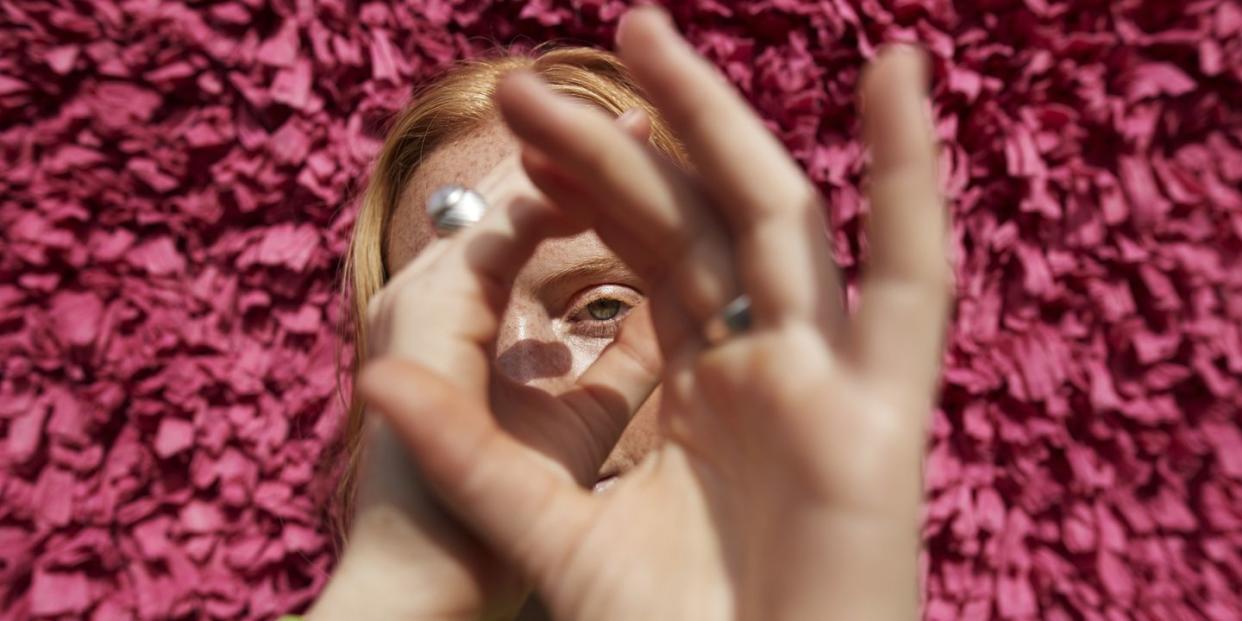What Is Coloboma? All About Madeleine McCann’s Rare Eye Condition

A young woman in Poland is getting attention after speaking out on Instagram with claims that she may be Madeline McCann, the British toddler who has been missing since 2007.
McCann, in case you’re not familiar with her story, disappeared while her family was vacationing at a resort in Portugal. Now, 21-year-old Julia Faustyna says she believes she may be McCann, noting that the two share physical similarities, including a coloboma in their right irises.
“I have similar eyes, shape of face, ears, lips,” Faustyna wrote in one Instagram post. In another, she said that their coloboma is “exactly the same.”
Faustyna’s posts have gone viral, and also raised a lot of questions about what, exactly, coloboma is. Here’s what you need to know.
What is coloboma?
Coloboma is a condition where normal tissue in or around the eye is missing at birth, according to the American Academy of Ophthalmology (AAO). "It’s a developmental abnormality where some part of the eye—and it can be any part of the eye—doesn’t form properly," says Sean P. Donahue, M.D., Ph.D., professor and chief of pediatric ophthalmology at Vanderbilt Children’s Hospital.
Colobomas can form in several parts of the eye. Those include, per the National Eye Institute (NEI), colobomas of the:
Iris (the colored part of the eye)
Uvea (layer of the eye that contains the iris)
Lens (the clear inner part of the eye that helps the eye focus)
Retina (the light-sensitive tissue lining the back of the eye)
Macula (the part of the retina needed for central vision)
Optic nerve (the nerve that connects the eye to the brain)
A person can have coloboma in one or both eyes, and they may impact vision, depending on where they’re located, the U.S. National Library of Medicine says. "It’s like a cleft lip, except around the eye," says Gil Binenbaum, M.D., chief of ophthalmology at Children’s Hospital of Philadelphia.
Colobomas are rare—they happen in about one in every 10,000 people, the U.S. National Library of Medicine says. Some are visible, while others are not. Colobomas in the iris can make a keyhole or teardrop shape, the NEI points out.
What causes coloboma?
Coloboma is something that happens before a baby is born. The eye develops in utero during the first three months of pregnancy, and a gap called the choroidal fissure appears at the bottom of the stalks that eventually form the eye, the AAO explains. This fissure usually closes by the seventh week of pregnancy. But, if it doesn’t, coloboma can form.
Coloboma can be caused by changes in genes involved in the early development of the eye, along with environmental factors like exposure to alcohol during pregnancy, the U.S. National Library of Medicine says. It’s also often linked to other health conditions like CHARGE syndrome and Wolf-Hirschhorn syndrome, the NEI says. While coloboma is usually not inherited, it can be passed down in families.
What does a person with coloboma see?
It depends on the location of the coloboma, Dr. Donahue. If coloboma is in the iris, it usually doesn’t impact vision, the U.S. National Library of Medicine says. But Dr. Donahue says that’s not always the case. "If it’s only of the iris, it shouldn’t impact vision significantly," he says. "However, sometimes coloboma of the iris affects how the image gets to the back of the eye, and the brain can start to turn the eye off. It can be associated with a decrease in vision." Still, "many people with a coloboma—if it’s just in the iris—are capable of 20/20 vision," Dr. Donahue says.
But colobomas in the retina can cause vision loss, as well as low vision (which is when vision loss can’t be corrected with glasses or contacts), nearsightedness, involuntary back and forth eye movements, or separation of the retina from the back of the eye, the U.S. National Library of Medicine says.
"If it is severe enough to affect vision, then it could have a profound impact," says Aaron Zimmerman, O.D., a professor of clinical optometry at The Ohio State University. "If it does not affect the central vision, then it often is not super debilitating."
How is coloboma treated? Can coloboma be cured?
There is no cure for coloboma. "You cannot replace that part of the eye," Dr. Donahue says. "You can maximize vision, but you can’t cure it." However, there are treatments that can help if the condition impacts a person’s vision, the NEI says. Those include:
Glasses or contacts to help with vision issues
Colored contact lenses to make the iris appear more round
Surgery to make the pupils appear more round
Low vision aids like telescopic glasses or lenses that filter light
An eye patch or eye drops (in young children)
"If there’s a coloboma of the eyelid, you can have surgery to repair that," Dr. Binenbaum says. Ultimately, though, "there is not much that can be done," Dr. Zimmerman says.
If your child has coloboma, Dr. Donahue recommends seeing their pediatrician. (Although he points out that this should be picked up during your child’s original neonatal screening.) The pediatrician can determine from there what type of coloboma your child has and whether they need to see a specialist.
You Might Also Like

